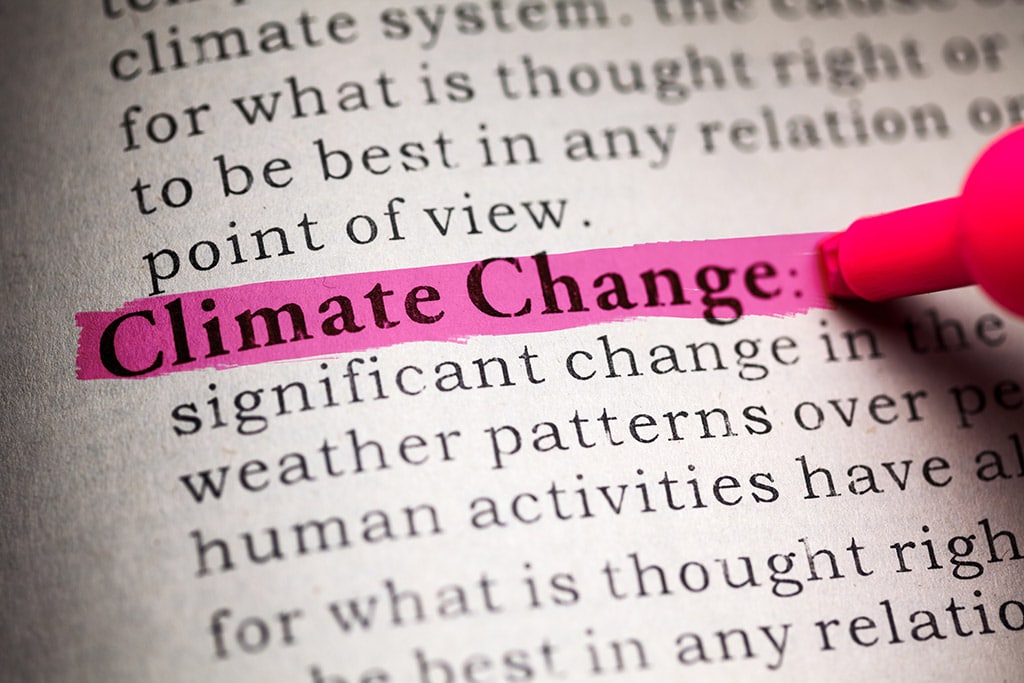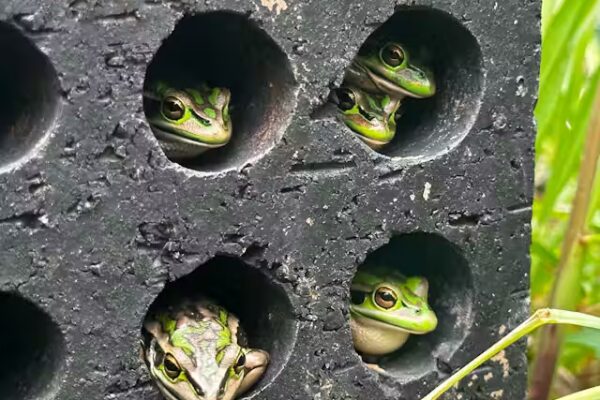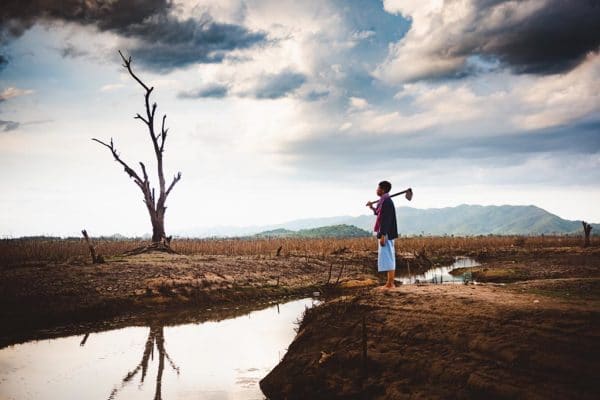We’re bombarded daily with news of apocalyptic fires, people fleeing their homes, animal extinctions, and massive coral bleaching. And for many of us, we can’t connect to reality because we are too detached from nature.
All this negativity paralyses us from taking action, and we’re unable to have high levels of optimism to create solutions.
So what does this mean for us?
It’s essential to recognize the things we can do. And to envision the future we desire. But first, we have to understand the diagnosis.

Let science explain
According to the Intergovernmental Panel on Climate Change, Earth’s temperature has risen around 1 °C (2.6 °F) since the Industrial Revolution. The IPCC and environmentalists want to prevent it from getting up to 1.5 °C. To give you some perspective, this is the temperature at which 70-90% of corals will disappear.
And the IPCC states, if current concentrations and emissions of greenhouse gases continue, we will exceed the 1.5 °C maximum. The UN Environment Program even predicts we will reach the 3.2 °C mark by the end of this century if we only rely on the Paris Agreement.
But does that mean we’re too late?
Around this time last year, essayist Jonathan Franzen wrote in The New Yorker, “What if We Stopped Pretending?” arguing that we were too late to do anything about climate change. And stating that instead of looking for solutions, we should prepare for the worst.
As you might have imagined, this triggered the scientific community and countless writers. Franzen had misrepresented the IPCC’s reports.
The truth is that climate change is already here. It’s not a matter of us preventing climate change but stopping it from getting worse and reversing its effects.
The good news
The science indicates that we are still on time to reverse climate change effects and prevent it from worsening. Nature is ready to regenerate. We just need to get out of the way.
The IPCC and most of the scientific community trust in mitigation (reducing greenhouse gas flow). And they estimate that the next decade will be the turning point of where climate change takes us. News flashed around about us only having 12 years to make it right.
Professor Daniel Kammen, a co-author of IPCC, says that “No one has a precise year, has a precise number, that if you exceed this, all hope is lost. That is just not a scientific fact.”
Fortunately, we’re moving! Social pressure from digital activists, growing transparency from companies, and more substantial government proposals are instilling hope in the youth and older generations. But they need to happen faster and more aggressively.
So, no. It’s not too late.
But to make this statement real, we must get creative and solve it this decade. Every day it’s one day late to stop climate change from getting worse. For every day that goes on, we’re going to have to think of bigger solutions. That’s why every little and individual effort and every climate policy proposed counts.
Here are some of the smartest proposals to stop climate change
1. Soil regeneration and restoring forests
According to the FAO, an estimated 95% of our food comes from the soil. Pretty much everything we eat.
But get this: according to the UN, we only have 60 years of topsoil left. And if you don’t already know, food production is responsible for one-quarter of the global greenhouse emissions. With regenerative farming practices, the amount of greenhouse carbon emissions will lower, and its effects reversed.
How does this work? Regenerative farming consists of three essential pieces: rotating crops, adding cover crops, and reducing tillage. This stops soil degradation, increases organic matter, and keeps carbon dioxide out of the atmosphere and under the ground. When it comes to deforestation, agroforestry relies on similar practices.
2. Renewable energy
News recently came out that renewable energy is now cheaper than fossil fuels. It directly emits zero carbon emissions, and it sources limitless power.
Of course, there are downsides. One is that it only generates energy on a small scale. But one solution to this is building microgrids, which, according to MIT, are a “small-scale power system that uses a combination of energy generation and storage devices to serve local customers.” This will decentralize the energy industry, activate the local economy, and is, by far, the smartest energy solution while corporations and governments divest from fossil fuels.
3. Ocean farming
We don’t need the latest technology to suck up most of the excess CO2 in the atmosphere. Seaweed farming can do that.
Bren Smith, an ocean farmer and founder of GreenWave, is the ultimate example of how fishers can grow seaweed and shells to not only help the local economy but to alleviate a large percentage of the climate crisis and keep our oceans healthy.
Shellfish and kelp soak five times more carbon than land-based plants. It doesn’t require land, freshwater, or fertilizer, making it one of the most sustainable foods. It aids in alleviating ocean acidification and regenerating biodiversity. Who would’ve guessed that seaweed is one of the solutions to the climate crisis?
We can solve this crisis because the technology is already here. And all of these are not just capable of stopping it but of reversing it.
These three proposals are some of the biggest ones that can solve climate change.
But by far, are these the only ones we can implement. Others include transitioning into a circular economy, educating girls, stopping the production of fossil fuel-powered transport, addressing social inequalities in the climate crisis, restructuring our water consumption, and more!
Do you know of some great strategies to stay optimistic and creative in our activism? What are your favourite solutions to the climate crisis? Let us know in the comments!


